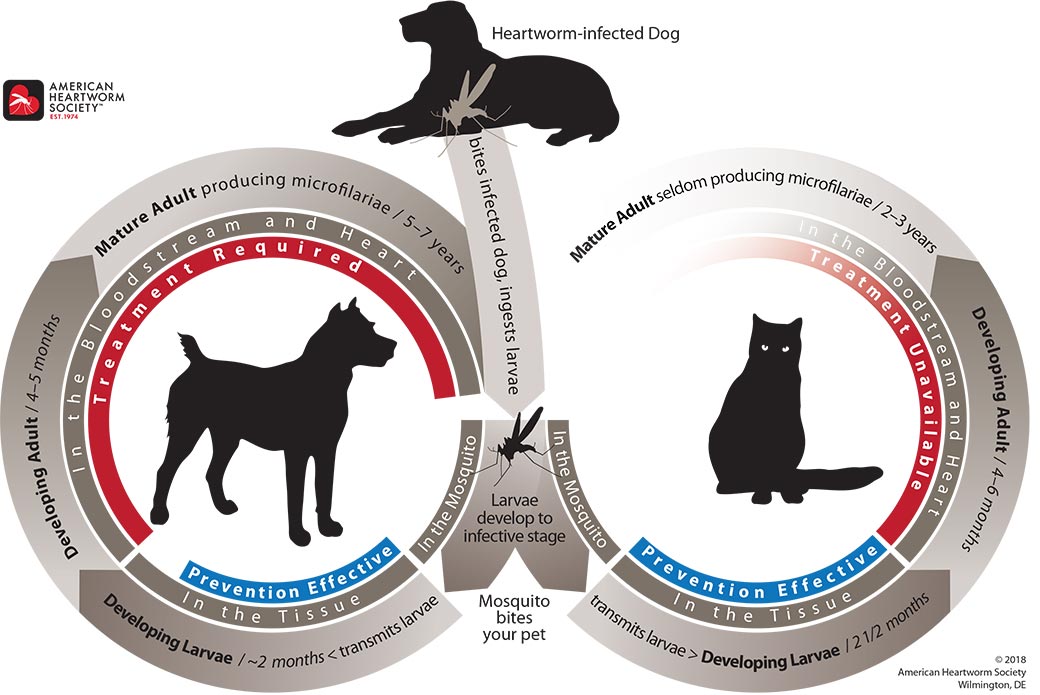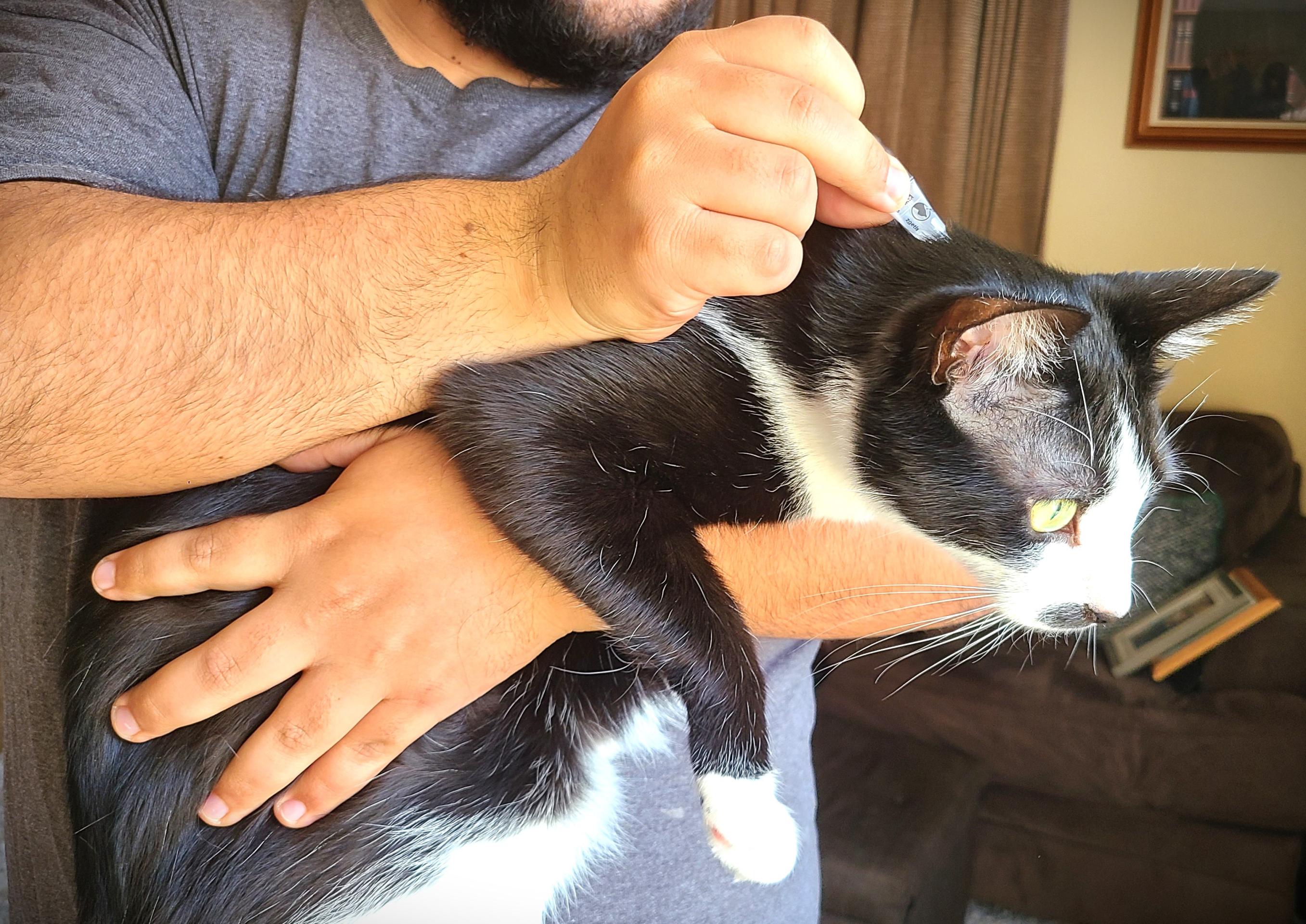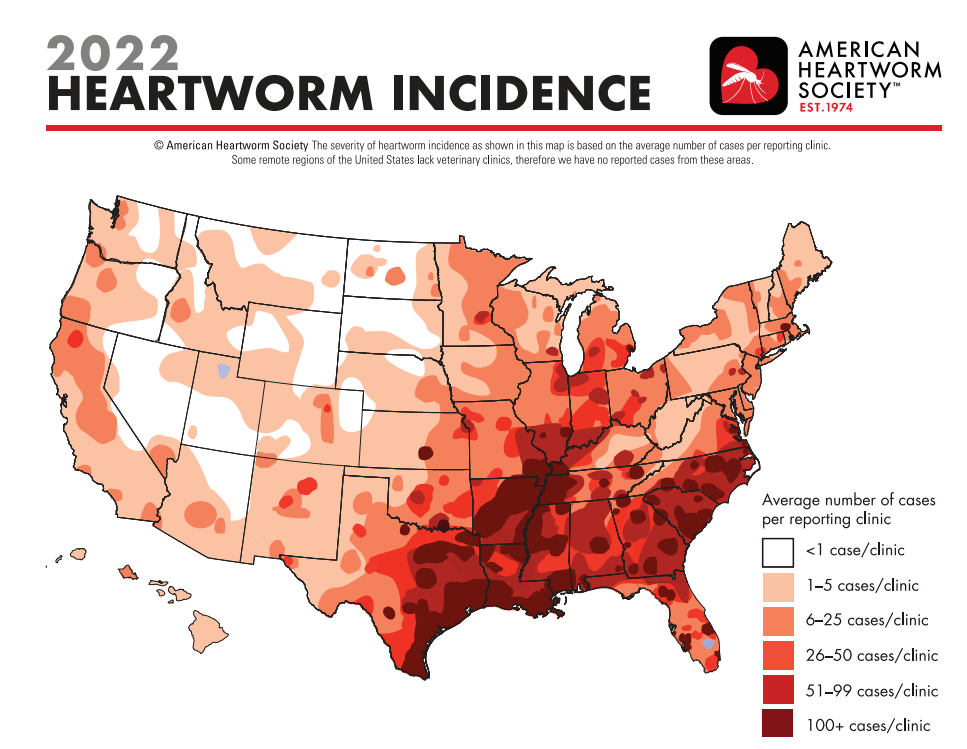 It is well established that heartworm disease impacts the life of our canine companions, but many questions revolve around feline heartworm disease. Initial transmission is similar for both cats and dogs, but when and how a cat progresses after exposure to a heartworm is drastically different than in dogs. Let's explore one more way our feline patients are so different from their canine counterparts.
It is well established that heartworm disease impacts the life of our canine companions, but many questions revolve around feline heartworm disease. Initial transmission is similar for both cats and dogs, but when and how a cat progresses after exposure to a heartworm is drastically different than in dogs. Let's explore one more way our feline patients are so different from their canine counterparts.
Heartworm disease is caused by a parasitic worm called Dirofilaria immitis. It has been diagnosed around the world affecting hundreds of thousands of pets each year. Once these larval worms are inside your pet's body they grow and develop over a period of time. They can infiltrate their heart, lungs, associated vessels, and tissues causing organ damage which can be fatal as they progress through their life-cycle.
The larval form of D. immitis is spread by mosquitoes not directly between dogs or cats. In our area, canid species such as dogs, coyotes, or foxes are hosts for this parasite and the most common carriers of the infective stage of heartworm called microfilaria. Microfilaria are the offspring of the adult worms living in that individual. Where the issue lies is that a mosquito takes a blood meal ingesting the microfilaria too. Then, while getting the next blood meal, some microfilaria previously picked up are deposited into the next individual. You, me, your dog, or cat are all susceptible to a mosquito bite even with living indoors. In Northeast Ohio we have established populations of wild coyotes that harbor microfilaria and unfortunately some neighborhood dogs. Urbanization and a multitude of factors contribute to sustaining populations of mosquitoes all year round. Pockets of areas with warmer temperatures, called heat islands, are found in suburbs and cities which allow for mosquitoes to prolong their duration of activity and reproduction resulting in further spread of this deadly parasite.
 Cats and how heartworm disease affects them is a complicated subject. The interaction between the cat and the progression of heartworm disease is completely different from a dog. Cats are not the normal host for heartworm (neither are humans thankfully) BUT initial infection happens just as easily. However, from this point forward, cats differentiate themselves. Although cats are not getting as many worms per infection, there are still deadly side effects from being exposed to heartworm. The American Heartworm Society's Feline Guidelines highlight two main stages of feline heartworm disease: 1) Reactivity to the arrival of the heartworms to the lung tissue and 2) Reactivity to the death of adult heartworms later in the life-cycle. Unfortunately both of these situations generally result in sudden pulmonary failure and often death. When heartworms arrive in the pulmonary artery (the artery or vessel where blood travels to the lungs to become oxygenated) and end up in lung tissue, a cat's reaction is similar to what asthma or allergic bronchitis looks like. If a cat does not react to the initial exposure to heartworms in the lungs, the parasite develops into an adult worm. Unlike dogs, most cat immune systems do not allow progression of the heartworms to this part of their life cycle. Because there is usually only one or two worms, and those worms are not usually able to reproduce, all that is left for them to do is mature and die. When a heartworm dies in your cat's body, the immune system over reacts causing a sudden inflammatory response in the lungs possibly causing a thromboembolism (a blood clot formed in the vessel). These responses often lead to death of the pet.
Cats and how heartworm disease affects them is a complicated subject. The interaction between the cat and the progression of heartworm disease is completely different from a dog. Cats are not the normal host for heartworm (neither are humans thankfully) BUT initial infection happens just as easily. However, from this point forward, cats differentiate themselves. Although cats are not getting as many worms per infection, there are still deadly side effects from being exposed to heartworm. The American Heartworm Society's Feline Guidelines highlight two main stages of feline heartworm disease: 1) Reactivity to the arrival of the heartworms to the lung tissue and 2) Reactivity to the death of adult heartworms later in the life-cycle. Unfortunately both of these situations generally result in sudden pulmonary failure and often death. When heartworms arrive in the pulmonary artery (the artery or vessel where blood travels to the lungs to become oxygenated) and end up in lung tissue, a cat's reaction is similar to what asthma or allergic bronchitis looks like. If a cat does not react to the initial exposure to heartworms in the lungs, the parasite develops into an adult worm. Unlike dogs, most cat immune systems do not allow progression of the heartworms to this part of their life cycle. Because there is usually only one or two worms, and those worms are not usually able to reproduce, all that is left for them to do is mature and die. When a heartworm dies in your cat's body, the immune system over reacts causing a sudden inflammatory response in the lungs possibly causing a thromboembolism (a blood clot formed in the vessel). These responses often lead to death of the pet.
 Misunderstood testing guidelines for feline heartworm disease further complicates the topic of our discussion. Dogs have had specific recommendations for diagnosis with both point of care and reference laboratory testing. These testing options are available for cats but do not give as reliable results. The main reason is because the progression of their infections is different from dogs, so the conditions that need to be met for a dog to show up positive are not met in cats. The most common testing for heartworm in dogs uses what is called antigen testing. In heartworm disease, the antigens produced by pregnant female worms are what we can detect. This means that in order for a test to show up positive with current testing techniques, we need at least four sexually active worms: one male and three female worms. These standards don't look so good when it comes to our feline patients. Why? Well, they usually only get one or two worms. Remember, they are NOT the usual host for this parasite and often eliminate heartworm before they reach this adult stage. This complication is one of the reasons why it is hard to successfully diagnose heartworm disease in cats with how our current testing techniques are designed.
Misunderstood testing guidelines for feline heartworm disease further complicates the topic of our discussion. Dogs have had specific recommendations for diagnosis with both point of care and reference laboratory testing. These testing options are available for cats but do not give as reliable results. The main reason is because the progression of their infections is different from dogs, so the conditions that need to be met for a dog to show up positive are not met in cats. The most common testing for heartworm in dogs uses what is called antigen testing. In heartworm disease, the antigens produced by pregnant female worms are what we can detect. This means that in order for a test to show up positive with current testing techniques, we need at least four sexually active worms: one male and three female worms. These standards don't look so good when it comes to our feline patients. Why? Well, they usually only get one or two worms. Remember, they are NOT the usual host for this parasite and often eliminate heartworm before they reach this adult stage. This complication is one of the reasons why it is hard to successfully diagnose heartworm disease in cats with how our current testing techniques are designed.
 Now, there is a positive surrounding feline heartworm disease: we can prevent it! Prescription medications are available that not only prevent heartworm infection in cats but also eliminate other intestinal and external parasites including fleas and ticks. In the United States, heartworm prevention can only by prescribed by a licensed veterinarian that has seen the pet in the last 12 months. Heartworm prevention in both dogs and cats are only effective at killing the worms at a certain stage in their life-cycle which is why giving it monthly is absolutely pertinent to its effectiveness, and why missing a dose or two can be detrimental. Over the counter flea and tick preventive purchased legally do not contain heartworm prevention. Applying a monthly preventive will promote the longevity and quality of life for your cat by ensuring they are not subject to the easily preventable and often fatal health concerns we have here in Northeast Ohio.
Now, there is a positive surrounding feline heartworm disease: we can prevent it! Prescription medications are available that not only prevent heartworm infection in cats but also eliminate other intestinal and external parasites including fleas and ticks. In the United States, heartworm prevention can only by prescribed by a licensed veterinarian that has seen the pet in the last 12 months. Heartworm prevention in both dogs and cats are only effective at killing the worms at a certain stage in their life-cycle which is why giving it monthly is absolutely pertinent to its effectiveness, and why missing a dose or two can be detrimental. Over the counter flea and tick preventive purchased legally do not contain heartworm prevention. Applying a monthly preventive will promote the longevity and quality of life for your cat by ensuring they are not subject to the easily preventable and often fatal health concerns we have here in Northeast Ohio.
In the United States, heartworm is now considered endemic to all 48 contiguous states as well as Hawaii. Dogs and cats can both suffer from this preventable disease but monthly medication prevents infection when they are exposed. The American Heartworm Society is continually reviewing the newest information regarding heartworm disease in cats and publishing updates since so much is still not defined in how this disease process affects feline patients. Remember, there is no approved treatment for feline heartworm disease. The only way to prevent it is to give your cat a monthly preventive medication prescribed by your veterinarian.


